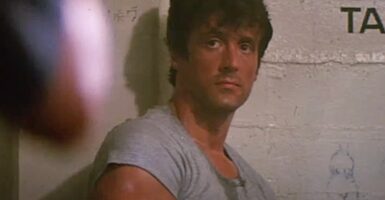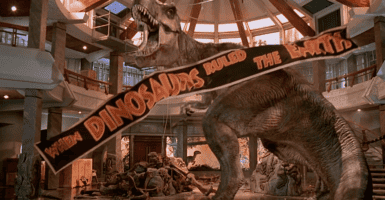Buy A 3-D Printed Figurine Of Yourself
This article is more than 2 years old
 Anyone who’s seen Austin Powers understands the benefits of having a Mini-Me. Don’t pretend you haven’t thought about it — how cool would it be to have a little clone of yourself to do your bidding, especially if it wears adorable little shoes?
Anyone who’s seen Austin Powers understands the benefits of having a Mini-Me. Don’t pretend you haven’t thought about it — how cool would it be to have a little clone of yourself to do your bidding, especially if it wears adorable little shoes?
Now, you can have that clone, kind of. It won’t take commands to foil your arch nemesis, but it will stand proudly at anywhere from 6 to 13 inches tall and look exactly like you. And it beats the hell out of taking a portrait in a shopping mall.
Twinkind, a company out of Hamburg, Germany, uses cutting-edge 3-D printing and 360-degree scanning to churn out little statues of you, your family, your friends, even your pets. The six-inch figurines cost about $300, the 13-inch figurines (for the adults or the freakishly tall) cost about $1,700, and there are five different sizes in between. This may seem like a lot, but we’re talking about the cost of immortality here. Or at least, 3-D immortality. And the quality and verisimilitude of the figurines is pretty amazing. They capture all of the little details — accessories, posture, hairstyle, sneers, smiles — if you wear or do it, chances are Twinkind can reproduce it in a figurine.

Obtaining a figurine is a relatively simple five-step process. First, you book an appointment and go to the studio, which I guess means a trip to Germany, so this figurine sounds better and better all the time. There, you choose the size of your figurine and any other options, such as clothing and the pose (they warn against wearing polka dots or silk, as well as any pose that won’t fit in their shipping box or which involves spreading out fingers or strands of hair, as those can break off easily). Second is the multi-camera 3D photogrammetry scanning, which captures a full 3D scan as fast as a camera captures a photo. Next comes post-production, in which the images captured by the scanner are transferred to print. From there, the figurines come to life via a 3D print comprised of composite powder. Finally, when the figurine is “perfect,” they’ll ship it to you (or you can pick it up, if you’re still hanging about in Hamburg).

The founders of Twinkind, Kristina Neurohr and Timo Schaedel, were inspired by a 3D photo booth they came across in Tokyo. That shop used handheld scanners, which Neurohr and Schaedel decided to upgrade as they ironed out the details of operating their own 3D figurine business. They opened in June and business is going “tremendously well” — well enough that the pair is considering expanding business to other countries.
And lest you think that buying a figurine from Twinkind is merely an exercise in narcissism, consider art historian Elisabeth Rudolf’s question: “What does it do to our reflection of time, of catching a moment or personality, when the statue is not a big one?” Hmm…in other words, what happens if the monuments to ourselves are not on the grand scale we (or the gods) might have imagined? Is there some kind of poignant dichotomy or challenge in being a big person with a small replica?
This question leads me to think about the historical figures I’d most want to see replicated, for various reasons: William Howard Taft. Abraham Lincoln. Andre the Giant. Marquis de Sade. Gandhi. Gene Simmons. Lady Gaga…
No matter how big the figurine, no one will have to worry about memorializing you when you die. No bronze busts, no sculptures that will eventually become home to dozens of pigeons. Just the perfect, portable monument, a frozen moment in time that will never melt.












